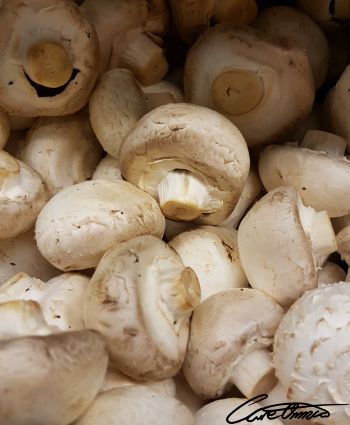What Is Vitamin D & What Foods Can I Find It In?

Vitamin D exists in two forms, vitamin D2, and vitamin D3.
It is fat-soluble. It means that the body does not need it every day. We have the potential to store it in the body.
Despite its name, vitamin D is not a vitamin. It is a hormone that is synthesized by sunlight.
The body makes vitamin D when the skin is exposed directly to the sun.
Vitamin D is vital for our overall health.
Table of Contents
Vitamin D2 And Vitamin D3
Vitamin D exists in two forms. Vitamin D2 and Vitamin D3. (source ◳)
There are a few differences between the two D vitamins.
Vitamin D2
Vitamin D2 is obtained from the UV irradiation of the yeast sterol ergosterol and is also found naturally in sun-exposed mushrooms.
Vitamin D3
Vitamin D3 is called the more natural form of vitamin D because the body can synthesize vitamin D3 from exposure when UVB light from the sun strikes the skin. (source ◳)
Benefits Of Vitamin D
There are many health benefits that can come from having adequate vitamin D levels.
Vitamin D is important for bone health in both children and adults.
It has also the ability of reducing risk for many chronic diseases including autoimmune diseases, type 2 diabetes, heart disease, many cancers, and infectious diseases. (source ◳)
Getting enough vitamin D are vital for maintaining health. You can find research-backed benefits of vitamin D in Vitamin D (D2 + D3): 12 Research-Backed Benefits .
Vitamin D Deficiency
Vitamin D deficiency affects almost 50% of the population worldwide. It is a growing problem. (source ◳)
Current studies suggest that we may need more vitamin D than is presently recommended to prevent chronic disease. (source ◳)
Vitamin D deficiency can lead to a loss of bone density, which can lead to osteoporosis and fractures.
Severe vitamin D deficiency can also lead to other diseases and depression.
In children, it can cause rickets.
How To Get Vitamin D
The major source of vitamin D for children and adults is exposure to natural sunlight. (source ◳)
In foods, vitamin D3 is only found in animal-sourced foods, and vitamin D2 is found in plant sources and fortified foods. (source ◳)
To get sufficient vitamin D from natural food sources alone is difficult. It means that consumption of vitamin D-fortified foods and exposure to some sunlight are essential for maintaining a healthy vitamin D status. (source ◳)
Both vitamin D2 and vitamin D3 are synthesized commercially and are found in dietary supplements or fortified foods. (source ◳)
Plenty Of Vitamin D Supplements Available
There are a lot of vitamin D supplements available to choose from.
The trick is to know which one to buy.
We've written a whole article about what vitamin D supplements we think are of the highest quality.
You will find it in Recommended Vitamin D Supplements
Foods You Can Find Vitamin D (D2 + D3) In
You find Vitamin D (D2 + D3) mostly in fats and oils, seafood, and vegetable products.
Examples of food sources include
- Cod Liver Fish Oil
- Smoked Carp
- Smoked Eel
- Dried Salmon
- Raw Mushrooms
- Raw Portabella Mushrooms
- Smoked Trout
Foods in our nutrition tool
You can find regularly updated, top ranked lists of foods for over 200+ nutrients in our nutrition tool.
If you are interested in what foods contain the most Vitamin D (D2 + D3) we recommend you visit our tool.
Here's our top ranked list of foods that contain

